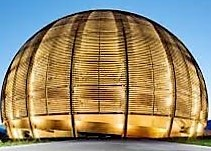Speaker
Description
The presence of ${\rm ^{26}Al}$ (T$_{1/2}$=1.04 Myr) in the interstellar medium has been strongly debated through the years: its 1.809 MeV $\gamma$-ray line has been appointed as a tracer of the recent nucleosynthesis in our galaxy, and its presence have been found spread along Galactic plane. Observations support the idea that this isotope can been formed through nucleosynthesis in massive stars and core-collapse Supernovae, but also Wolf-Rajet objects, AGB-stars, Novae and X-ray burst have been proposed as nucleosynthesis site. In all this sites, ${\rm ^{26}Al}$ can be produced via the ${\rm ^{26}Mg(}p,\gamma{\rm )^{25}Al(}\beta^+{\rm )^{25}Mg(}p,\gamma{\rm )^{26}Al}^g$ reaction chain. A clear comprehension of the process is hampered by the presence of an isomeric state ${\rm ^{26}Al}^m$(T$_{1/2}$=6.34 sec), which can be directly fed by the ${\rm ^{25}Al(}p,\gamma{\rm )^{26}Si(}\beta^+{\rm )^{26}Al}^m$ chain, reducing the quantity of ${\rm ^{26}Al}^g$ produced in the process. The ${\rm ^{26}Si}$ produced in this way can also be depleted by the ${\rm ^{26}Si(}p,\gamma{\rm )^{27}P}$ that will interfere with the creation of the isomeric state. This reaction can be therefore useful to understand the ratio between ${\rm ^{26}Al}^g$ and ${\rm ^{26}Al}^m$.
Experiments involving ${\rm ^{26}Si}$ are challenging due to its short half-life (T$_{1/2}$=2.24 sec), and for this reason an indirect measurement of the ${\rm ^{26}Si(}p,\gamma{\rm )^{27}P}$ has been performed using the ${\rm ^{26}Mg(}d,p{\rm )^{27}Mg}$ one, employing the so-called Asymptotic Normalization Coefficient (ANC) method in its extension for mirror nuclei. Using this method, it was possible to extract the contribution to the cross section of the direct capture in the ground state and the resonant one in the 1st excited state of ${\rm ^{27}P}$. The reaction rate has been also evaluated, finding an enhancement with respect to the one already available in literature. In this contribution, after a brief overview about the ANC method and its extension for mirror nuclei, the experimental results regarding the ${\rm ^{26}Si(}p,\gamma{\rm )^{27}P}$ will be presented.




